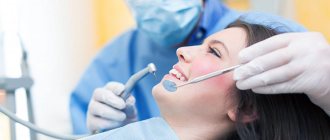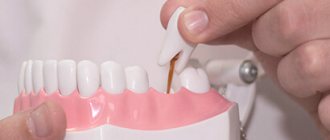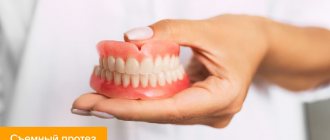The article material was approved by the doctor: Konishchev Vitaly Konstantinovich Oral and maxillofacial surgeon, dentist-implantologist
14 years
Have you ever thought about why there are fewer and fewer healthy and energetic people among us, and even fewer creative and happy people, especially in megacities and large industrial cities? Poor environmental and social conditions, constant psycho-emotional stress, a general decrease in immunity under the influence of harmful factors, untimely detection of diseases lead to a significant deterioration in the health of the nation as a whole, new diseases appear, and old ones acquire other, more severe forms of progression. A disappointing feature of our time is the progressive increase in the number of chronic diseases, accompanied by epidemics of allergic diseases and mycoses, including immune diseases.
Despite the rapid development of the pharmaceutical industry and the abundance of drugs, morbidity and mortality rates leave much to be desired. Today, great hopes are placed on pharmaceutical therapy, but they are not justified:
- Antibiotic-resistant strains of microorganisms have appeared;
- Allergic reactions to medications taken very often develop;
- Almost all medications have side effects.
STOP! STOP POISONING YOURSELF AND YOUR LOVED ONES WITH PILLS! GET EXAMINED BY A DENTIST!
The oral cavity is often a source of chronic infection and the cause of a number of chronic diseases, which at first glance have nothing to do with the dental system: diseases (!) of the joints, organs of the gastrointestinal tract, heart and blood vessels, genitourinary system, vision and hearing, skin diseases, neuropsychiatric disorders and many, many others, including migraine. This happens because a diseased tooth, or inflammation of the tissues surrounding the teeth, is a process of vital activity and reproduction of various microorganisms (bacteria, viruses, fungi), as a result of which toxins are released into the body, affecting not only the stomach, but mostly the liver, brain, kidneys, heart and blood vessels. A special role of foci of chronic infection (and in our case, caries and its complications, gingivitis, periodontitis, cysts and granulomas at the root tips, etc.) belongs to the formation of joint diseases. The notorious “deposition of some salts”, arthritis and arthrosis, osteochondrosis, which appeared suddenly or were detected on an x-ray after an injury, are a consequence of the effect of microorganisms and their toxins on joint tissue (cartilage, synovial membranes, etc.). Often, untreated teeth of the upper jaw form cysts and granulomas that connect with the cavities of the maxillary (so-called maxillary) sinuses, causing chronic sinusitis and pansinusitis (inflammation of all paranasal sinuses), so an ENT doctor will never completely cure such sinusitis , and will convince you of advanced chronic sinusitis caused by some infection that is resistant to any antibiotics or procedures. And the reason for everything is a rotten, inflamed tooth root, the tip of which sticks out in the maxillary sinus. Hence the headache, dizziness, poor sleep, decreased vision, decreased hearing, adenoids, hoarseness, constant nasal congestion, lacrimation, heartburn, gastritis, dysbacteriosis, colitis, frequent inflammatory diseases of the upper respiratory tract and many other disorders of various organs and systems. Thus, by curing this notorious tooth, or removing the top of it with an inflamed cyst, you get rid of another source of chronic infection that is slowly eating away at your body.
SAVE YOURSELF AND YOUR FAMILY FROM UNPLEASANT CONSEQUENCES - GO WITH YOUR WHOLE FAMILY TO THE DENTIST!
Stages of disease development. Where does the disease begin?
The most unexpected microorganisms can cause severe and fatal illnesses. Now let's look at the chain of development, that is, the cycle of transformations from health to illness and the death of an individual. At school we studied the cycle of life in nature, the water cycle, watched interesting films about animals, about the food chain.
But at the same time, we have always considered ourselves “Kings of Nature,” not assuming that inside us, in our body, the same cycle of different lives is possible, coming and going, but living by eating our cells, each other, or feeding on other people’s scraps. Everyone has the same motto: “Survive at any cost, winners are not judged!” This means infiltrating into the best place, individual for each specific type of parasite, finding food for growth, reproduction, protecting its offspring and helping it spread.
So let's look at this process. Sparing the feelings of convinced atheists, I will start not with the true causes of the development of diseases - spiritual, energy-informational, but with “materialized” ones, that is, those that can be seen, touched, identified, calculated and measured. These reasons are the microorganisms living in us. I will paraphrase the Bible saying “what is outside of us is also in us” to “what is on the earth and in the air is also in us.”
Let's consider the process of disease development and the role of various microorganisms involved in it. The trigger mechanism for the development of the disease is viruses. They are able to penetrate cells, weakening them or completely destroying them. These do not necessarily have to be formidable viruses specific to immune cells. Any other viruses that penetrate us from childhood gradually lead to a weakening of the immune system, a weakening of the protective properties of cells, organs, and systems.
TMJ dysfunction
Caries and subsequent pulpitis lead to tooth loss, occlusal disorders, problems with chewing, etc. This changes the load on the temporomandibular joint, causing dysfunction. When the TMJ “does not work” correctly, headaches, neck pain, bruxism, ringing and noise in the ears, and disturbances in the movements of the lower jaw may appear. If the dysfunction persists for a long time and worsens, eating disorders may develop against its background (the patient is afraid to eat solid, chewing foods because of pain), sleep disorders, depression, and other disorders.
You have questions?
We will call you back within 30 seconds
+7
Viruses
Viruses feed on the energy of cells, that is, they seem to de-energize them.
Viruses very clearly maintain territory, that is, each of them lays claim to a specific organ or system. Even different types of the same type of virus have their own localization. In the course of my medical work, I became convinced that your immune system is brought to the point of exhaustion (not to be confused with tension) by viruses and only viruses.
DNA viruses: pycnoviruses, iridoviruses, herpesviruses, adenoviruses, parvoviruses, hepadnaviruses, hepatitis B.
RNA viruses: paramyxoviruses, rhabdoviruses, arenaviruses, orthomyxoviruses, retroviruses, reoviruses, flaviviruses, calciviruses, hepatitis A, C, D, E, G.
Clinical manifestations: respiratory viral infections, pneumonia (pneumonia), maculopapular rashes on the skin and mucous membranes, blistering rashes, meningitis, encephalitis, hepatitis, diarrhea, conjunctivitis, genital lesions (herpes simplex virus, adenovirus, HIV), congenital and perinatal (postpartum) lesions (cytomegalovirus, herpes, rubella virus, enteroviruses, HIV).
Recommendations
The longer you ignore a bad tooth and hope that the problem will go away on its own, the more difficult and painful its treatment will be. To prevent oral diseases, it is recommended: 1.
- Carry out regular dental hygiene, annual professional teeth cleaning, and procedures to strengthen dental tissue.
- Watch your diet and limit sweets.
- Treat chronic diseases.
And of course, you should visit the dentist promptly. Even if nothing worries you, a preventative annual examination will help make sure there are no pathological processes. After all, there are diseases that make themselves felt at an advanced stage of development.
Bacteria
Next, bacteria are introduced into the already weakened cells, which are able to completely destroy the cell, feeding on its insides. According to the nature of their development, they are divided into those that are able to divide and grow only inside the cell (chlamydia, etc.) and those that multiply both inside and outside the cell (mycoplasma, legionella, listeria, rickettsia, etc.). The variety of lesions they cause is explained by their sensitivity to different types of host cells (human, animal).
Intracellular bacteria:
Chlamydia:
- chlamydia trichomatis (trachoma, urogenital chlamydia and pneumonia of newborns, lymphogranuloma venereum, arthritis, arthrosis, heart damage)
- chlamydia from birds (ornithosis - pneumonia, fever)
- chlamydia pneumoniae (pneumonia, acute respiratory infections, atherosclerosis, bronchial asthma)
Rickettsia:
- rickettsia (rickettsiosis, typhus)
- rohalimia (trench fever, cat scratch disease)
- Klebsiella (Congo red fever)
Escherechia:
- Escherechia (maculopapular rash)
- bartonella (bartonellosis)
By multiplying in cells, intracellular bacteria are protected not only from various influences from the human body, but also from the effects of most antibacterial drugs that are not able to penetrate inside cells. Extracellular bacteria feed on already decomposed cells, “melting” them and turning them into pus. They are a kind of orderlies (cleaners) of the body, cleaning out diseased organs and systems.
Extracellular bacteria:
- Staphylococcus (skin pustular infections, endocarditis, pneumonia, arthritis, osteomyelitis, peritonitis, eye infections, toxic shock syndrome, food toxic infections)
- Oral sticks (gingivitis, stomatitis, endocarditis, sepsis)
- Streptococci (pharyngitis, postpartum infections, neonatal sepsis, bacteremia, meningitis, arthritis, genitourinary tract infections, pneumonia, sinusitis, otitis of the middle ear, rheumatic attack, abscesses of the lungs, liver, brain)
- Bacilli (Anthrax, bacteremia, septicemia, meningitis, eye infections, pneumonia, endocarditis, food poisoning
- Corynebacteria (diphtheria, erythrasma, skin lesions in the axillary and groin area, cellulitis, septicemia, brain abscesses and osteomyelitis)
- Clostridia (gas gangrene, foodborne illnesses, necrotic enteritis, tetanus, botulism)
- Gonorrheal bacillus (infections of the lower parts of the genitourinary tract (cervicitis, urethritis, abscesses of the glands adjacent to the vagina), infections of the upper parts of the genitourinary tract (endometritis, epididymitis, pelvic inflammatory diseases), infections of other organs and tissues (proctitis, pharyngitis, blenorrhea, pelvic peritonitis and perihepatitis, pharyngeal gonorrhea), disseminated gonococcal infection; meningococcal infection)
- Pseudomonas (skin lesions, abscesses, infection of burn lesions, keratitis, conjunctivitis, otitis of the external ear, meningitis, bacteremia, endocarditis, enteritis, para- and rectal abscesses, pneumonia, urinary tract infections, osteomyelitis and arthritis)
- Flavobacteria (colonize wounded surfaces, respiratory, intestinal tracts, organs of the genitourinary system, severe meningitis of newborns, septicemia, endocarditis, pneumonia).
Intracellular and extracellular bacteria not only get along with each other, but, participating in the cycle, eat what the previous microorganisms destroyed. They can be compared to jackals and hyenas, eating what is left of the victim after a tiger.
For courage
— Do you need to somehow prepare for going to the dentist’s office? I know that abroad a doctor can refuse a patient if he comes with bad breath.
— Yes, sometimes patients come who are not ready and do not understand at all that it would be worth brushing their teeth before the visit. For courage, many take strong drinks in the evening and come in with a fume.
We do not refuse admission, but we correctly explain that you should not smoke in front of the clinic or eat garlic and onions, that you need to respect yourself and the doctor. And if everything is said politely, then patients follow the recommendations, which is very pleasing.
Protozoa
The decomposed cellular substrate in the organ is attacked by protozoa, which, processing this waste, act as garbage collectors in containers. Thus, dead cells, bacteria, and toxins are not just scattered throughout the organ, but cleaned, aligned cavities. This process is dynamic, each type of introduced microorganisms has time to become saturated and grow, multiply, that is, give birth to offspring.
The process continues until the immune system says: stop! It sends lymphocytes, leukocytes, macrophages, antibodies, sends energy and, depending on how well they cope, either recovery, improvement, remission (subsidence) occurs, or the disease turns into a sluggish chronic process. Protozoa are localized in the skin, eyes, tongue, intestines, liver, kidneys, bladder, genitals, etc.
Pregnancy
During pregnancy, dental health can deteriorate significantly. There are fewer reserves of vitamins and minerals, the body’s defenses are reduced, and the likelihood of pathogenic microbes penetrating into the tissues of the gums and teeth increases.
And if a woman did not take care of her oral health before bearing a child, then the pathological process will only worsen until the complete loss of teeth.
The source of chronic infection is very dangerous for the unborn baby. It can lead to sepsis, which will certainly affect the development and growth of the fetus and the course of pregnancy. Therefore, during this period there is no need to postpone a visit to the dentist, but on the contrary, you should rush to see a doctor.
Types of fungi
Candida are representatives of normal microflora. Several types of candida are known, which can also be pathogens. Fungal gastroenteritis is observed in severely weakened children and the elderly, as well as people of any age with significant immune deficiency of various origins. They are characterized by a gradual onset, bloating, infrequent loose foamy stools, rumbling and various soreness, nausea, vomiting, and cramping abdominal pain. In very severe cases candidasepsis may occur. Secondary infection easily develops on the affected surfaces. The disease is getting worse. Such a course of candidiasis is possible only in a dirty intestine, with blockages from a mixed meat and dairy diet in the body with a high deficiency of silicon, which is capable of excreting candida with feces. In practice, 90% of those consulted suffer from candidiasis.
Cryptococci - cause subacute or chronic deep mycosis. Most often (70%) this disease occurs in people with a mixed diet who have overloaded the enzymatic apparatus of the stomach. In such cases, even baker's yeast can cause cryptoccosis due to the infinitely large expenditure of acid to neutralize alkaline enzymes coming from the mouth with carbohydrate foods that were eaten along with protein. To get rid of this disease, it is necessary to remove the root cause of the disease - overload of the acid-forming gastric mucosal bioapparatus, use only separate nutrition, cleanse the intestines, and only then will antimycotic treatment be successful.
Penicildia - cause deep mycoses, caused by a variety of green molds that can affect the skin, mucous membranes, external auditory canal, and internal organs. Penicilliums occur after the use of antibiotics. Nocardia asteroides are aerobic, immobile formations that occupy an intermediate state between fungi and bacteria. Most are saprophytes, but can cause diseases in humans and animals. Nocardiosis can be expressed as mycetoma -. a tumor in the lungs consisting of a dense plexus of mold.
A close relative of Nocardia asteroides is Actinomycetes isrielii. They cause severe mycotic lesions of the cervicofacial region, chest and abdominal cavities - granulomas. This fungus is most often found in people living in areas of high radiation, as well as working in hazardous chemical production.
Mucor fungi cause a disease very similar to tuberculosis - mucophomycosis.
Aspergillus is a fungus that includes many species. Some of them are pathogenic. They are capable of deeply affecting tissues. They release toxins and give rise to malignant formations.
Geotrichosis is a disease caused by fungi that attack the mucous membranes. They accompany diseases - otitis media, sinusitis.
Trichophyton is a fungus that causes diseases of the skin, hair, and nails. It is rare to find a person who is not contaminated with trichophyton.
Trichophytis - causes ringworm disease. Trichophytosis can be superficial or chronic. Superficial trichophytosis is characterized by the appearance of erymatous peeling on the scalp. The fungus penetrates the hair, destroys it, the hair breaks, which is why the name “ringworm” is associated.
Epidermophyton floccosum is the causative agent of lichen nigricans. This disease manifests itself as slightly scaly dark brown or black spots, most pronounced on the extremities. Penetration of the fungus into the skin can be deep, and upon recovery, when the black spots disappear, the skin regains its ability to pigment (change color from exposure to the sun) for 2-3 years. At this time, non-tanning spots from ringworm black appear on the arms and legs. The disease recedes with the usual antimycotic treatment with celandine juice.
Microsporiums are fungi that cause the disease microsporia, which affects the skin, hair and nails. Exposure to all kinds of creams, ointments, powders and rubs either does not give a healing effect, or gives a very short-term improvement in health. To completely get rid of microsporia, it is necessary to take antimycotic treatment from inside the body.
Mycosis fungoides - causes the disease mycosis fungoides - a malignant tumor lesion of the lymph vessels, the fungus initially settles on the skin, and then colonizes the lymphatic system.
Mycoplasmas Fluor - cause inflammatory processes mainly in the respiratory organs and in the genitourinary system.
Sporothrix is a fungus that attacks muscles, bones, and internal organs.
All fungi produce poisons that cause a wide variety of allergic reactions. Toxins from aspergilus fungi have a toxic effect on the liver.
Yeast species: Candida, Candida albicans, Cryptococcus, Trichosporum, Saccharomyces.
Molds: trichophyton, microsporium, epidermiphyton, aspergillus, mycosis.
PRINCIPLES OF TREATMENT OF INFECTIONS OF THE ORAL CAVITY AND MAXILLOFACIAL AREA
Treatment of odontogenic infection
often limited to local therapy, including standard dental procedures.
Systemic antibacterial therapy is carried out only when odontogenic infection spreads beyond the periodontal period (under the periosteum, into the bones, soft tissues of the face and neck), in the presence of elevated body temperature, regional lymphadenitis, and intoxication.
When choosing antimicrobial therapy in a hospital setting, in cases of severe purulent infection, it is necessary to take into account the possibility of the presence of resistant strains among anaerobes such as Prevotella
spp.,
F. nucleatum
to penicillin, which determines the prescription of broad-spectrum drugs, amoxicillin/clavulanate in monotherapy or a combination of fluoroquinolone with metronidazole.
Due to increasing levels of resistance by Streptococcus
spp.
to tetracycline and erythromycin, these drugs can only be used as alternatives. Since metronidazole has moderate activity against anaerobic cocci ( Peptostreptococcus
spp.), simultaneous administration of β-lactam antibiotics is necessary to increase effectiveness.
Preventive systemic use of AMPs when performing dental procedures in the oral cavity or periodontium does not guarantee a reduction in the incidence of infectious complications in somatically healthy patients. Convincing data on the sufficient effectiveness of topical antibiotics for oral infections have not been obtained. At the same time, oral bacteria are a reservoir of determinants of resistance to AMPs. Excessive and unjustified use of antibiotics contributes to their appearance and the development of resistance of pathogenic microflora.
Each organ has its own tooth
It has been known since ancient times that the condition of a particular tooth can determine the disease in the corresponding group of organs. Today this is a scientifically proven fact. For example, by using the incisors above and below (teeth 1 and 2), diseases of the ears, bladder and kidneys can be diagnosed, and by the canines (3) the condition of the liver and gallbladder can be determined. Small molars (premolars 4 and 5) transmit data about the lungs and large intestine, and large molars (molars 6 and 7) about the stomach, spleen and pancreas, and the so-called “wisdom teeth” can tell about the condition of the heart and small intestine .
At the same time, affected teeth identified by a dentist during an examination do not always mean the presence of diseases in the corresponding internal organs. It happens that a patient presents with pain in apparently healthy teeth or even with phantom pain (a painful signal comes from an internal organ to the site of the extracted corresponding tooth). Knowing about these relationships, it is easier to identify the affected organs.
A dental problem is not just a dental problem
Pain in the quads above and below can be a sign of weak ligaments (shoulder, elbow, wrist, ankle and knee joints), chronic inflammation of the joints (for example, polyarthritis), diseases of the large intestine - diverticulosis, polyposis.
Sixes and sevens (molars) are beacons of gastrointestinal diseases (gastritis, gastric or duodenal ulcers), advanced anemia, chronic pancreatitis. Problems with the top six are a reason to get checked for tonsillitis and sinusitis, diseases of the pharynx and larynx, tumor formations in the thyroid gland, mastopathy, and inflammation of the appendages. If something is wrong with the lower sixes, there are problems with the arteries, atherosclerosis. But the lower sevens are problems with the lungs (chronic pneumonia, bronchitis, bronchial asthma), polyps in the large intestine, something is wrong with the veins (varicose veins, hemorrhoids).
Have your wisdom teeth been bothering you for a long time? Make an appointment not only with the dentist, but also with the cardiologist. Coronary heart disease, congenital heart disease and other cardiac diseases - in terms of wisdom teeth. Plaque and tartar can be a signal of endocrine system disorders, a sign of gastric ulcer.










